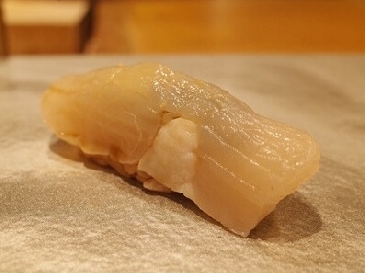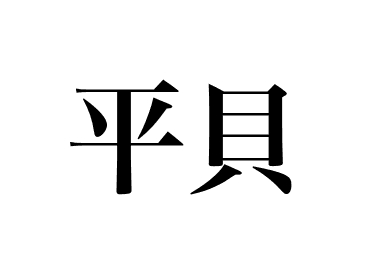Shellfish


Pen-shell (Tairagi)
【Nigiri sushi: Kai】
What is Tairagi?
Although its proper name is “Tairagi”, it is commonly known as “Tairagai(Pen-shell)”. The largest ones have shells with lengths of 30 cm and two adductor muscles: one large and one small. It’s the large adductor muscle that is mainly used for food and Pen-shells (Tairagi) are often shelled before they are shipped. The raw version with the shells still intact and used by sushi restaurants, etc., are a bit more expensive.
There are two types of Tairagi: those with rows of scale projections on the shell surface and those without scales and smooth, and the former is classified as Rishike-tairagi (Atrina pectinata lischkeana) and the latter as Tairagi (Atrina (Servatrina) pectinata), and the latter is classified as Tairagi (Atrina (Servatrina) pectinata).
Fishermen call those with scales on the shell "ken" or "gaza" and those without scales "zube". However, some surveys have shown that Rishike-tairagi and Tairagi are not clearly distinct species based on morphological characteristics.
When a knife enters the Tairagi, the surface of the cut turns into a fine wrinkle. It’s that fine that wrinkle, and the sensation like a rough tongue that proves the Tairagi is alive. When you take a bite, the crisp texture as you bite down, the subtle sweetness of the sea, and the familiar bitterness that almost gets lost behind them, is a combination of flavors specific to the Tairagi and are very satisfying to the tongue. Considered as higher in quality than scallop because of its better texture and taste. It tastes good eaten raw, but its sweet flavor is enhanced when sliced somewhat thickly and grilled.
The umami of tairagi is related to glutamic acid and inosinic acid, as well as glycogen and succinic acid, which are commonly found in large amounts in bivalves. In addition, glycine petaine and β-alanine petaine, which are contained in large quantities in Tairagi, are also responsible for its unique taste.
Also called Fan-shell.
【Temperature of vinegared rice (shari) and sushi toppings】
36℃/15~20℃
【Trivia】
The reason why shellfish is so delicious is the glutamic acid and inosinic acid content, but pen shell also contains high amounts of glycogen (a polysaccharide), which enhances the umami flavor.
【Related contents】
Nori (Dried laver seaweed)
List of Shellfish (Kai)
(Revision date: April 22, 2025)
Main production area
Setonaikai Mikawawan
Famous production area
Season
Winter-Early spring

